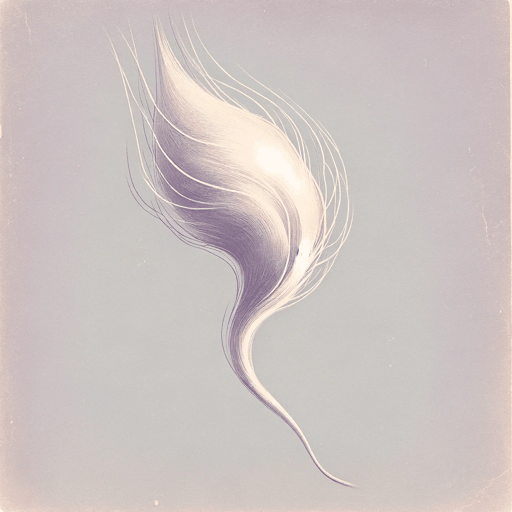19 pages • 38 minutes read
Gwendolyn BrooksSpeech to the Young: Speech to the Progress-Toward (Among them Nora and Henry III)
Fiction | Poem | Adult | Published in 1991A modern alternative to SparkNotes and CliffsNotes, SuperSummary offers high-quality Study Guides with detailed chapter summaries and analysis of major themes, characters, and more.
Summary and Study Guide
Overview
Gwendolyn Brooks is the author of the lyric poem "Speech to the Young: Speech to the Progress-Toward (Among them Nora and Henry III)." Published in her 1970 collection of poems, Family Pictures, the poem is informed by the Harlem Renaissance in the 1920s and 30s and the Black Arts Movement of the 1960s and 70s. Brooks read Black authors affiliated with both periods, and these writers pushed her to use her writing to directly, carefully, and humanely speak to her community, young people, and her children, Nora and Henry.
The central message of the poem is that young people should learn when to set aside thrills and embrace the calmer, quieter aspects of life. Such guidance occurs in her other works, like in her famous poem "We Real Cool” (1960) where Brooks shows what can happen to young people who live life in the fast lane. As the first Black person to win a Pulitzer Prize, Brooks has a vast and varied canon. She published around 20 books—poetry for adults, poems for children, two autobiographies, and a novel. "Speech to the Young” is not one of Brooks’s most famous poems, but it demonstrates her attachment to young people and her signature mix of precise, inventive, and melodious language.
Poet Biography
Gwendolyn Brooks’s mom Keziah Wims Brooks and dad, David Brooks were a schoolteacher and janitor, respectively. They lived in Chicago but wanted to have Gwendolyn at Keziah’s parents’ house in Topeka, Kansas; thus, on June 7, 1917, Gwendolyn Brooks was born in Kansas. With their newborn daughter, Keziah and David moved back to Chicago and the South Side. Brooks grew up in a neighborhood nicknamed "Bronzeville'' since most of the people living there were Black. Her parents created an artistic and literary environment by filling the house with singing and books. Angela Jackson’s critical biography of Gwendolyn Brooks, A Surprised Queenhood in the New Black Sun (Beacon Press, 2017) says Keziah told her daughter, “You’re going to be the lady Paul Laurence Dunbar.” Dunbar was a notable Black poet from the late 1800s/early 1900s.
Brooks wasted little time in starting her literary career. At 11, she published four poems in the Hyde Parker—a local newspaper. Two years later, she published a poem in the national magazine American Childhood. Later in her teens, she met Langston Hughes, a well-known poet affiliated with the Harlem Renaissance—a New York City-based movement composed of Black artists and writers who wrote proudly and unapologetically about their experiences. According to A Surprised Queenhood in the New Black Sun, Hughes told Brooks, "Keep writing! Someday, you’ll have a book published!”
In 1937, Brooks joined the National Association for the Advancement of Colored People (NAACP) Youth Council. She married another writer, Henry Blakely, and, in 1940, they had a son named Henry.
In 1941, Brooks began attending a poetry workshop led by Inez Cunningham, a wealthy white woman. As a reader for the influential Poetry magazine, Cunningham opened a lot of doors for Brooks. In 1945, Harper & Row published her first book of poems, A Street in Bronzeville—so Hughes’s prediction came true. In 1949, Harper & Row published Annie Allen, which won the 1950 Pulitzer Prize for Poetry. Brooks was the first Black person to take home the prestigious honor. “That's why I am as well-known as I am today,'' quipped Brooks in a 1987 interview cited in Mel Watkins’s New York Times obituary “Gwendolyn Brooks, 83, Passionate Poet, Dies” (2000). ''Sometimes, I feel that my name is Gwendolyn Pulitzer Brooks.''
Brooks received copious honors, including Guggenheim fellowships and a grant from the American Academy of Arts and Letters. She reviewed books for the Chicago Tribune and the Chicago Sun-Times. In September 1951, her daughter Nora was born. Two years later, she published her episodic novel, Maud Martha. In 1956, she published a collection of poems for children, Bronzeville Boys and Girls. In the 1960s, she became familiar with writers—Amiri Baraka and Ron Milner, among them—connected to the Black Arts Movement. Like the Harlem Renaissance, the Black Arts Movement encouraged Black writers to uncompromisingly assert their identity and voice. Around this time, Brooks started a poetry workshop in Chicago for young people. Her students included members of the Chicago gang the Blackstone Rangers.
Galvanized by the Black Arts Movement, Brooks left Harper & Row and started publishing with the Black-owned Broadside Press. The company published several of Brooks’s books including the poetry collection Family Pictures in 1970 and each of her autobiographies. In 1976, Brooks became the first Black woman elected to the illustrious National Institute of Arts and Letters. In 1989, the National Endowment for the Arts gave her a lifetime achievement award.
All of the success and accolades did not stop Brooks from attending to her main concern: the youth. In the interview cited in Watkins’s obituary, Brooks claimed, “My greatest interest is being involved with young people.” Indeed, throughout her life, Brooks visited young people at schools, hospitals, and jails. With her own money, she funded poetry contests for schoolchildren. In 2000, at the age of 83, Brooks died at her Chicago home.
Poem Text
Brooks, Gwendolyn. “Speech to the Young: Speech to the Progress-Toward (Among them Nora and Henry III).” 1980. Poetry Society of America.
Summary
The title of Gwendolyn Brooks's poem "Speech to the Young: Speech to the Progress-Toward (Among them Nora and Henry III)" provides two key clues concerning the poem’s central topic. It is a "Speech to the Young," so it's about a talk for young people—a group that could encompass everyone from children to teens to young adults. Brooks adds another part: This poem is also a speech about "the Progress-Toward." It's a speech for young people—her two children Nora and Henry among them—about how they can develop, change, and move toward something laudable.
The speaker opens the poem, "Say to them" (Line 1). Given the title, "them" is "the young." The speaker provides additional names for the young in compound words. These aren't familiar compounds like "baseball" or "self-care" but creative compounds. According to the speaker, the youth are also "down-keepers" (Line 2), "sun-slappers" (Line 3), "self-soilers" (Line 4), and "harmony-hushers" (Line 5).
After listing four alternative names for young people, the speaker provides the titular speech. It's short—one sentence and 13 words (approximately the length of the title)—and is about day and night. Even if the young "are not ready for day" (Line 6), they should realize that "it cannot always be night" (Line 7). If someone tells this to young people, they "will be right" (Line 8). If they convey the wisdom in the short speech to their young audience, they will have accomplished a difficult feat or have hit a "hard home-run” (Line 9).
In Stanza 2, the speaker provides further tips for the young. They shouldn't live to win "battles" (Line 10), nor should they exist for "the end-of-the-song" (Line 11), but they should stay in the moment and live "in the along" (Line 12).
Related Titles
By Gwendolyn Brooks

A Bronzeville Mother Loiters in Mississippi. Meanwhile, a Mississippi Mother Burns Bacon
Gwendolyn Brooks

A Sunset of the City
Gwendolyn Brooks

Boy Breaking Glass
Gwendolyn Brooks

Cynthia in the Snow
Gwendolyn Brooks

Maud Martha
Gwendolyn Brooks

my dreams, my works, must wait till after hell
Gwendolyn Brooks

The Ballad of Rudolph Reed
Gwendolyn Brooks

The birth in a narrow room
Gwendolyn Brooks

The Blackstone Rangers
Gwendolyn Brooks

The Chicago Defender Sends a Man to Little Rock
Gwendolyn Brooks

The Crazy Woman
Gwendolyn Brooks

The Lovers of the Poor
Gwendolyn Brooks

The Mother
Gwendolyn Brooks

the rites for Cousin Vit
Gwendolyn Brooks

To Be in Love
Gwendolyn Brooks

To The Diaspora
Gwendolyn Brooks

Ulysses
Gwendolyn Brooks

We Real Cool
Gwendolyn Brooks

